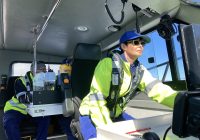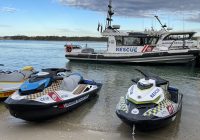The economic output of Australia’s marine industry continued to grow despite the effect of the COVID-19 pandemic restrictions on some sub-sectors, a new report released today by the Australian Institute of Marine Science (AIMS) shows.
The AIMS Index of Marine Industry 2023 is the latest assessment of the contribution of Australia’s marine sector to the national economy, using data from the 2018-19, 2019-20 and 2020-21 financial years.
The Index reveals that Australia’s marine industry, widely referred to as the “blue economy”, had a total output of $118.5 billion and supported 462,000 full time equivalent jobs (direct and indirect employment).
The output is $37.3 billion greater than that reported in the previous Index. This is largely accounted for by four new sub sectors assessed for the first time in the 2023 Index, which together generated $31.4 billion.
Without these four sub sectors, the marine industry’s contribution to GDP still increased from 3.7% in 2017-18 to 3.8% in 2020-21. By adding in the four new sub sectors the contribution to GDP rose to 5.2% in 2020-21.
AIMS CEO, Dr Paul Hardisty said the Index tracked the emergence of a two-speed marine economy in 2020-21, with marine tourism, commercial fishing and water transport among the sub sectors experiencing an overall decline in economic output due in part to measures introduced to address the spread of COVID-19.
“The pandemic resulted in a range of economic anomalies for the sector, with losses largely offset by increases in output from the offshore gas industry,” he said. “Despite setbacks, the Index shows the marine industry’s significant contribution to Australia’s economic wealth.
“Scientific research, done by agencies such as AIMS, provides the knowledge that protects our ocean ecosystems and underpins the sustainable recovery and growth of many of these marine industry sub sectors,” Dr Hardisty said.
While international tourism was badly affected by the pandemic, and domestic tourism nationally saw an overall decline, in Western Australia, there was a 19% increase in domestic tourism expenditure because the COVID-19 hard border travel restrictions meant WA holiday makers visited destinations within the state instead of interstate or overseas.
WA emerged as a blue economy powerhouse in the 2023 Index thanks to its offshore resources-driven economy. Output from the marine industry in WA makes up almost half (46%) of the total national marine industry output in 2020-21, at $54.7 billion. Its offshore natural gas production comprised 68% of the state’s marine economic output.
Nationally, this sub sector experienced significant growth despite COVID-19 with output increasing 11% per year on average from $31.9 billion in 2017-18 to $43.7 billion in 2020-21.
The 2023 Index includes a new section that discusses the future megatrends that could influence Australia’s blue economy.
Adapting to climate change and technology improvements could change the composition of the marine industry, with the inclusion of new sub sectors like offshore renewable energy, sustainable aquacultural practices and biproducts that reduce ocean pollution in the future. Australia is already starting down this pathway, with its first offshore wind development zone announced in late 2022.
“These new sub sectors will offer opportunities to Australia as we learn how best to harness the country’s ample renewable energy resources,” added Dr Hardisty. “There is potential for new ocean industries to create wealth and prosperity for the nation.
“But the consequences of climate change are causing a declining trend for the marine environment due to ocean warming and sea level rise and could introduce more risk for the marine industry. Scientific research, under this volatile future, can guide efforts to grow new blue carbon sub sectors and steer existing ones to be more viable.”
Click here to view the reportFor more information visit: www.aims.gov.au







